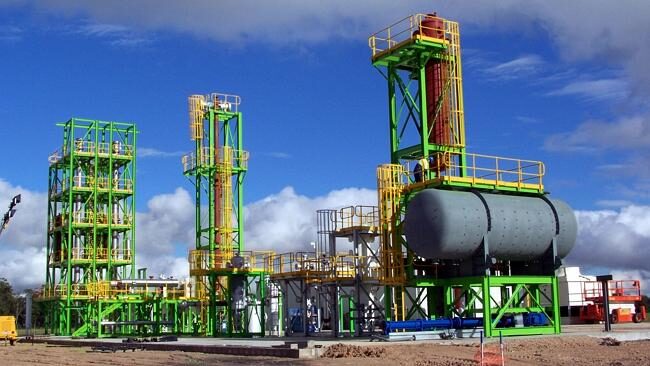Issues: Coal Seam Gas Exploration in Australia
The following article is presented to encourage discussion and to provide information. It does not necessarily reflect the present policy position of Australian Voice.
CONTRIBUTED
Hopeland residents fear fracking has destroyed their land
by JOHN McCARTHY, The Courier-Mail, 12 June 2015


The Linc Energy underground coal gasification pilot plant at Chinchilla. Source: Supplied
HOPELAND residents asked what other disasters could afflict the prime farmland region near Chinchilla on the western Darling Downs at a community meeting held by the State Government on Wednesday night.
Locals pointed fingers at the gas industry for a series of events that have left them scratching their heads.
“We’ve had bubbling rivers, bore explosions and subsidence,’’ Hopeland grain farmer Arthur Gearon said. “No one has been able to tell us why the (Condamine) river is bubbling. It’s the unknown that is causing the fear. We don’t want to see the end of the (gas) industry, but can we halt and let the science catch up?’’
He said farmers were also concerned the perception would be that Hopeland was tainted, that its rich soils were now contaminated.
“What’s going to be the impact on land prices and the buyers of our produce?’’ Mr Gearon asked. “We don’t want to scare away Chinese buyers. People are here (at the community meeting) because they are scared.’’
Their fears were raised once again by claims lodged in court by the State Government this week that Linc Energy’s underground coal gasification plant had contaminated 320sq km of farmland, affecting 50 landowners, with hydrogen, carbon monoxide and hydrogen sulfide. The hydrogen is potentially explosive.
Queensland Environment Minister Steven Miles and his director-general Jon Black assured farmers the contamination would not affect crops or grazing because it was metres below the ground.
Mr Miles said the risk of an explosion from hydrogen was remote.
The Government is considering seeking court orders to force Linc to pay for the any clean-up costs arising from alleged contamination.
